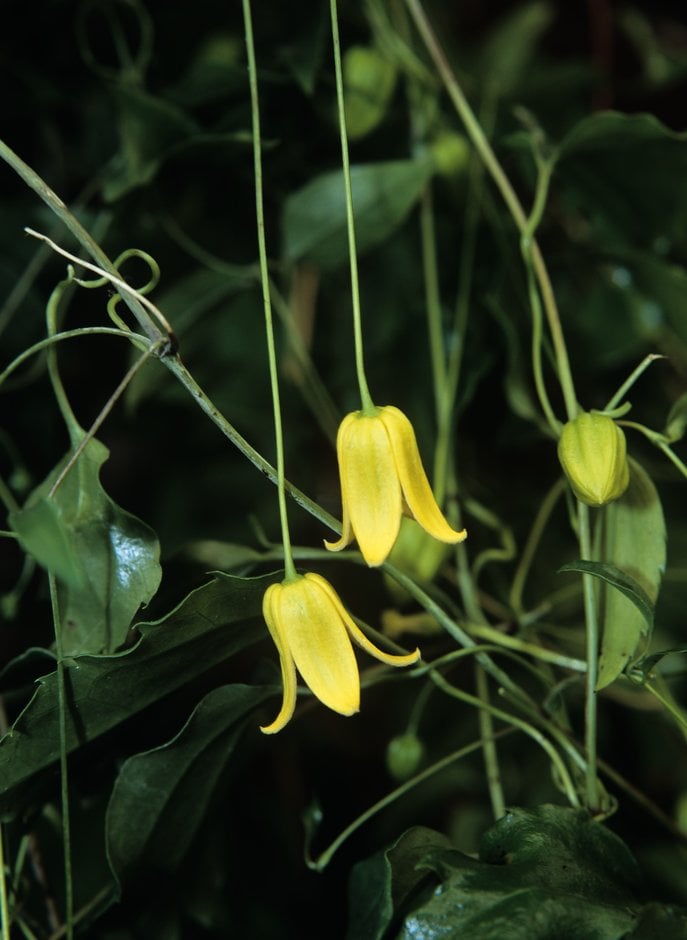Clematis repens Finet & Gagnep.
A woody-based, semi-evergreen shrub with climbing or trailing stems. Leaves are 3-10cm long, usually simple but may be divided into three leaflets. Small, yellow, bell-shaped flowers 1-2cm long are borne singly in leaf axils from summer into early autumn

Size
Ultimate height
1.5–2.5 metresTime to ultimate height
2–5 yearsUltimate spread
1–1.5 metresGrowing conditions
Moisture
Moist but well–drainedpH
Acid, Alkaline, NeutralColour & scent
| Stem | Flower | Foliage | Fruit | |
| Spring | Green | |||
|---|---|---|---|---|
| Summer | Yellow | Green | ||
| Autumn | Yellow | Green | ||
| Winter | Green |
Position
- Full sun
- Partial shade
Aspect
West–facing or South–facing or East–facing
Exposure
Exposed or Sheltered Hardiness
H5Botanical details
- Family
- Ranunculaceae
- Native to GB / Ireland
- No
- Foliage
- Semi evergreen
- Habit
- Climbing, Trailing
- Potentially harmful
- Skin irritant. Wear gloves and other protective equipment when handling. Pets (rabbits): Harmful if eaten. For further information and contact numbers regarding pets, see the HTA guide to potentially harmful plants
- Genus
Clematis can be deciduous or evergreen shrubs or herbaceous perennials, mostly climbing by twining leaf-stalks, and often with showy flowers. Some have attractive fluffy seedheads in autumn
- Name status
Correct
How to grow
Cultivation
Plant in a moisture-retentive, well-drained soil, with the roots and base of the plant kept cool and shaded by other plants or a layer of pebbles at the base. See clematis cultivation for further information. Its trailing stems make it ideal for growing through plants in the herbaceous border
Propagation
Propagate by seed, by layering or semi-hardwood cuttings
Suggested planting locations and garden types
- Cottage and informal garden
- Patio and container plants
- Flower borders and beds
Pruning
Pruning (clematis) group 1. If required, cut back overlong shoots after flowering
Pests
May be susceptible to aphids, snails and caterpillars; petals may be eaten by earwigs
Diseases
May be susceptible to honey fungus (rarely), clematis wilt and clematis slime flux
Get involved
The RHS is the UK’s gardening charity, helping people and plants to grow - nurturing a healthier, happier world, one person and one plant at a time.